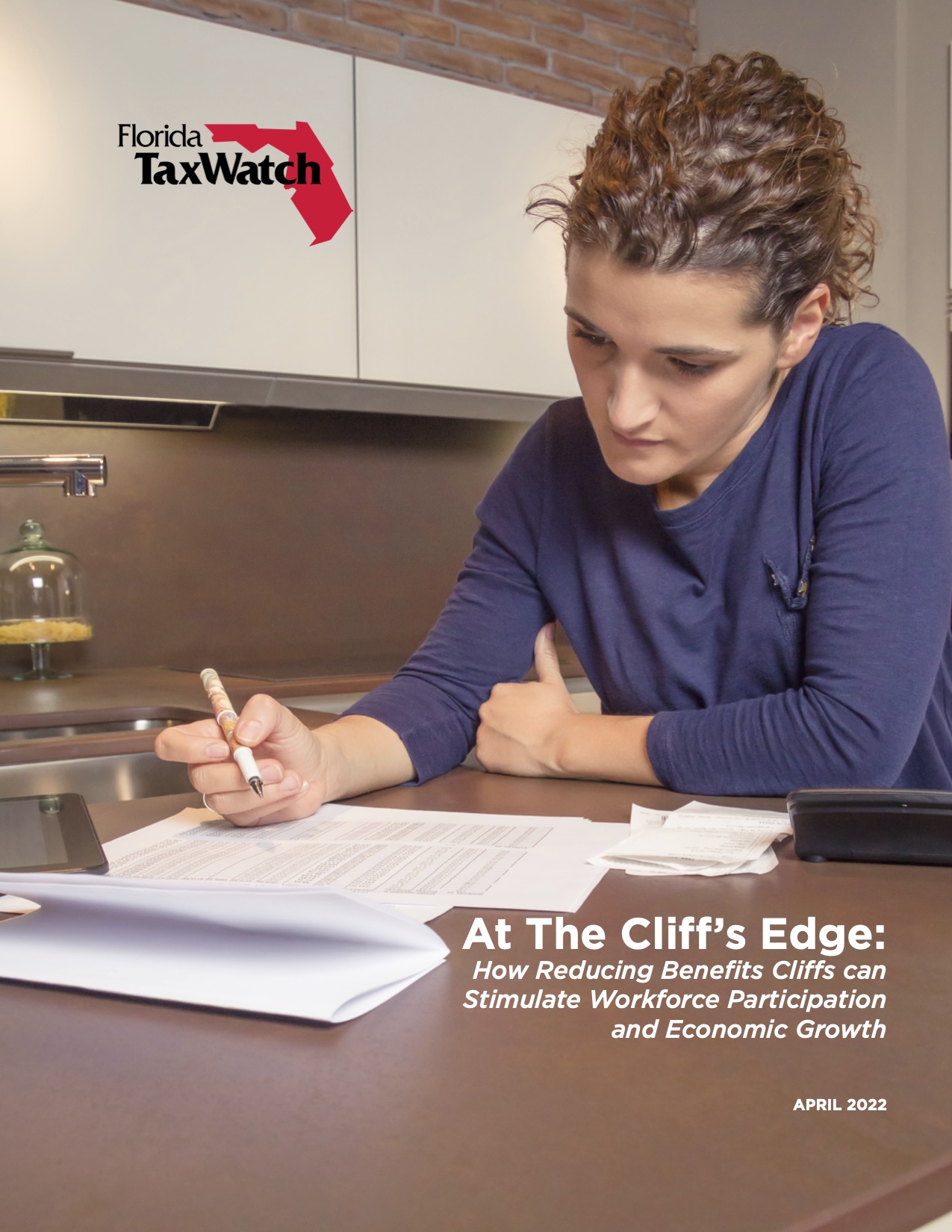Benefits Cliffs—At the Cliffs Edge
How reducing benefits cliffs can stimulate workforce participation and economic growth
 Based on many economic indicators, Florida’s labor market has experienced a significant rebound since the early pandemic lows. By the beginning of 2022, Florida’s total employment eclipsed 9.1 million workers, adding 504,000 jobs over the year. The state has reclaimed all the jobs lost between February and April 2020. As job growth continues across all major economic sectors, the state’s unemployment rate has inched lower to 3.5 percent as of January 2022.
Based on many economic indicators, Florida’s labor market has experienced a significant rebound since the early pandemic lows. By the beginning of 2022, Florida’s total employment eclipsed 9.1 million workers, adding 504,000 jobs over the year. The state has reclaimed all the jobs lost between February and April 2020. As job growth continues across all major economic sectors, the state’s unemployment rate has inched lower to 3.5 percent as of January 2022.
Despite the seemingly unabated progress, a deeper analysis reveals the labor market recovery has been far from flawless. The “Great Resignation” has led to heightened job quit rates for reasons such as low pay and health risks. The lack of access to affordable childcare has led to more than 170,000 women in Florida exiting the workforce, and due to market forces, inflation has erased wage gains for many workers.
Throughout the ongoing pandemic recovery, labor market participation has been particularly concerning. After peaking in March 2007, Florida’s labor force participation rate has steadily declined, hitting a low point of 53.8 percent in April 2020. By the start of 2022, the participation rate had recovered to 58.6 percent but remained below pre-pandemic levels.
The reasons for lower workforce participation, especially among women, are diverse and include factors such as early retirements and increased caregiving responsibilities. Early research from the Federal Reserve finds that based on survey responses, the number of individuals citing “other reasons” for nonemployment has been growing. One specific factor in this broad category involves the loss of valuable benefits as income grows, more than offsetting any gains and disincentivizing employment.
Alongside the workforce situation, Florida’s public assistance landscape has also felt the brunt of pandemic-induced factors. Between January 2020 and December 2020, the number of Floridians receiving Supplemental Nutrition Assistance Program (SNAP), Temporary Assistance to Needy Families (TANF), and Medicaid rose between 18.2 and 28.9 percent. Although SNAP caseloads have declined since then, Florida’s Medicaid enrollment has remained elevated in 2022, reaching 4.3 million people.
These labor market and public assistance outcomes are especially consequential for the more than 2.7 million Floridians in poverty and the more than 2.6 million households who are Asset Limited, Income Constrained, Employed (ALICE). For ALICE households, families earn above the federal poverty threshold but cannot afford basic household necessities due to the cost of living. Addressing the challenges directly affecting low-income populations will be imperative for economic mobility and Florida’s economic growth.
The U.S. social safety net system encompasses various public assistance programs that assist low-income individuals and families weathering financial challenges. Through direct cash transfers, in-kind benefits, and tax credits, these programs provide a base level of economic stabilization while yielding opportunities for further economic advancement. Due to the way many programs are designed, most public assistance programs are “means-tested,” meaning they are only available to individuals with income up to a certain threshold. This particular program design can sometimes have the unintentional consequence of causing families to suddenly lose benefits after earning more income.
Benefits cliffs occur when a marginal wage increase results in the partial or total loss of public benefits for different public assistance programs. For illustrative purposes, imagine a mother earns a $1,000 annual raise but loses more than $8,000 in childcare assistance—a cliff effect occurs. When benefits cliffs materialize, there may be a subsequent disincentive for individuals to progress along a wage or career path necessary for economic self-sufficiency and advancement.